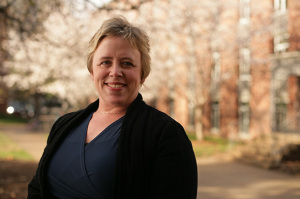At a termly meeting of faculty on October 20, the Administration proposed to hire more minority and foreign-born professors. Its five-year plan states that the percent of such faculty will be twenty-five percent by 2019. Provost Carolyn Dever decried that “as of 2012, minority/international undergraduate student representation was at 42.9% [while] faculty representation was 17.5%.” President Phil Hanlon announced that the College would spend one million dollars to help achieve this goal. (Clearly, achieving a nineteen percent return on our endowment this year has left Parkhurst with burning holes in its pockets.)
It is of note that this thrust is not considered inconsequential, a single bullet point in an interminably tortuous PowerPoint presentation–rather, President Hanlon emphasized this as “paramount to our academic excellence,” and Provost Dever made it the main topic of her remarks to the two hundred professors in attendance. She worried that “high profile departures … could contribute to a widespread concern among students and faculty that we’re falling further behind,” (as if she were a Lyndon Johnson of academia, decrying the Diversity Gap). She announced the creation of what is essentially a Diversity Czar position–Denise Anthony was appointed to the new “Vice Provost for Academic Initiatives” position, where she will be in charge of overseeing all new diversity hiring measures. Claiming this subject as a matter of utmost importance, Dever asked for help from the faculty, and, channeling President Kennedy, Dever claimed, “We will not accept, ‘It is hard,’ as an answer to the challenges of diversity recruitment.”
It is unfortunate that Dever slipped into pathos-mode in her speech, even getting to the point of intoning, “I don’t want to be in a position … of having to explain to a student why there’s not a faculty member that looks like him or her.” Amidst Hanlon’s and Dever’s rhetoric of improving the College’s position in the world, nowhere was explained exactly why and how hiring more “underrepresented” professors “of color” would be an empirically verifiable boon. More precisely, one could ask, “Why is it vital that we care about whether a professor has come from inside or outside the strip of land bounded by artificial borders we call a ‘country’ or whether said professor has the same amount of pigment in his skin as a fraction of the students that he teaches?” Making this a priority of faculty hiring is at odds with the important diversity needed on a college campus–diversity of thought, which is the backbone of a liberal arts education. Shooting for diversity of skin color and of nationality will skew this aim; notice that whenever a newly elected President of the United States extols the diversity of his chosen Cabinet, that circle will consist of men and women who check off all the boxes of nationality and skin color and somehow are all rich lawyers who march ideologically in lockstep with the President. As is The Review‘s long-held position, we believe the College should focus on undergraduate education first and foremost by hiring the best professors possible — in short, judging them not by the design of their flag or the color of their skin but by the content of their character.


Be the first to comment on "Faculty Diversity at Dartmouth"